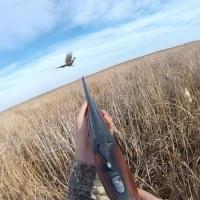Big Kandi update!

By
doubleUcubed
in SW Minnesota & Willmar-Spicer Fishing Reports - Hunting - Events
-
Your Responses - Share & Have Fun :)
-

-

By Kettle · Posted
On an off light precipitation today. Hoping the weather this weekend will be nice so I can get out and crappie fish and check the weather. My yard has standing water and the driveway is a mess. Lot of lakes are near standard water levels which is good. Heard they are done stripping eggs on cut foot. Shaping up to be a good opener. Last year fished open water 60+ days and 28 different lakes. Hopefully bump both those numbers up this year -

By rundrave · Posted
I don't think its 100% accurate, you are just relying on other average joes to report precipitation. But I think most numbers there are right in the ball park, especially when you see consistency among multiple reports in a general area. It's probably more accurate than what the weather terrorists say on the news which usually only reports metro areas. cocorahs is good for getting rural area reports you just might not have as many reports to go off of -

By smurfy · Posted
i like this site!!!!! 👍 thanks rundave......its in my favorites!!!!!! -

By leech~~ · Posted
Thanks Mike. I've been looking at bags of it for years but never wanted to chance wasting good meat on it. I have a gas and charcoal grills, but really love the flavor of charcoal over gas. Most of the time it's if we have time to use one or the other. -

-

-
.thumb.jpg.5c1a86e9339e49e53f5bfefed2220054.jpg)
By LakeofthewoodsMN · Posted
On the south end... The big open water, otherwise known as Big Traverse Bay, is ice free. The bays and tributaries of LOW such as Zippel Bay, Bostic Bay and Four Mile Bay are ice free as well. The lake is in good shape for the MN Fishing Opener on May 11th. The many bays and backwaters of the lake have been receiving attention from spring pike anglers. Some pike have already entered the bays, spawned and gone back out to the lake, but there are still a pile of fish to be had. The pike season on LOW is open year round. The limit is 3 pike per day with one fish allowed more than 40 inches. All fish 30 - 40 inches must be released. On the Rainy River... Another great week sturgeon fishing on the Rainy River. The bite has been very good and lots of fish of all sizes are being boated. Sturgeon are being caught from Four Mile Bay at the mouth of the Rainy River all the way to Birchdale, about 42 miles. There are many boat ramps along the river to make life easy. Starting from the east going west... -Nelson Park at Birchdale (About 30 miles east of Baudette) -Frontier (9 miles west of Birchdale) -Vidas (Near Clementson Rapids) -Timbermill Park (East Baudette) -Peace Park (International Drive, Baudette) -Wheeler's Point (mouth of Rainy River) The sturgeon season continues through May 15th and resumes again July 1st. Oct 1 - April 23, Catch and Release April 24 - May 7, Harvest Season May 8 - May 15, Catch and Release May 16 - June 30, Sturgeon Fishing Closed July 1 - Sep 30, Harvest Season If you fish during the sturgeon harvest season and you want to keep a sturgeon, you must purchase a sturgeon tag for $5 prior to fishing. One sturgeon per calendar year (45 - 50" inclusive, or over 75"). Up at the NW Angle... The Angle is ice free. Resorts are gearing up for the fishing opener which is expected to be excellent. The late ice bite was very good and the walleyes are in good numbers amongst the islands area of the NW Angle. -

By smurfy · Posted
oh you know where i mean..........where all your friends are!!!!!!!🤗 -

By Mike89 · Posted
Charcoal Briquettes are great for low and slow cooking as they produce long-lasting heat. Lump Charcoal burns hotter and adds more flavour to your food; therefore is great for hot and fast cooking.
-

Recommended Posts